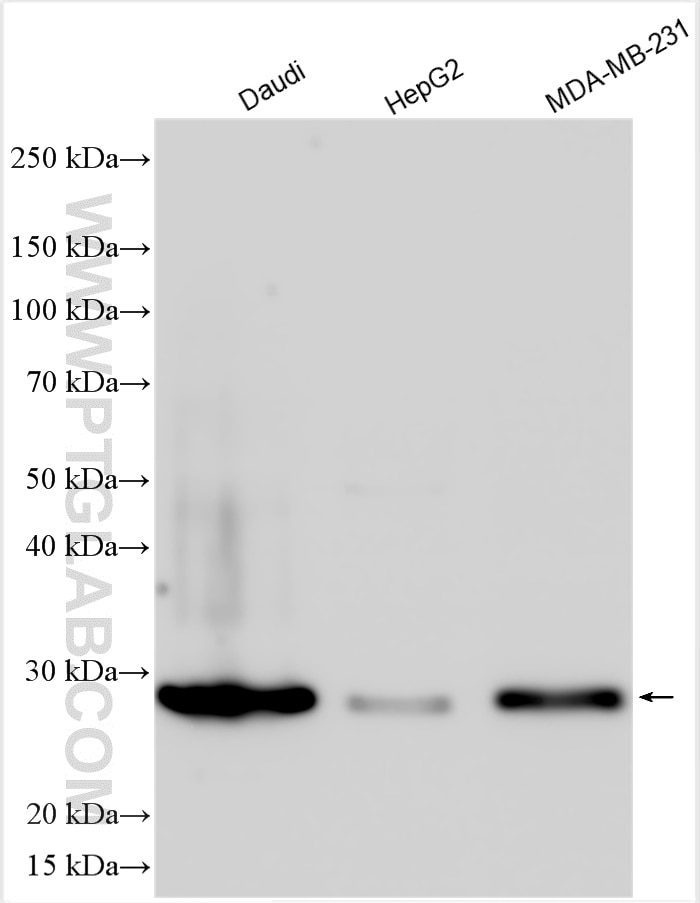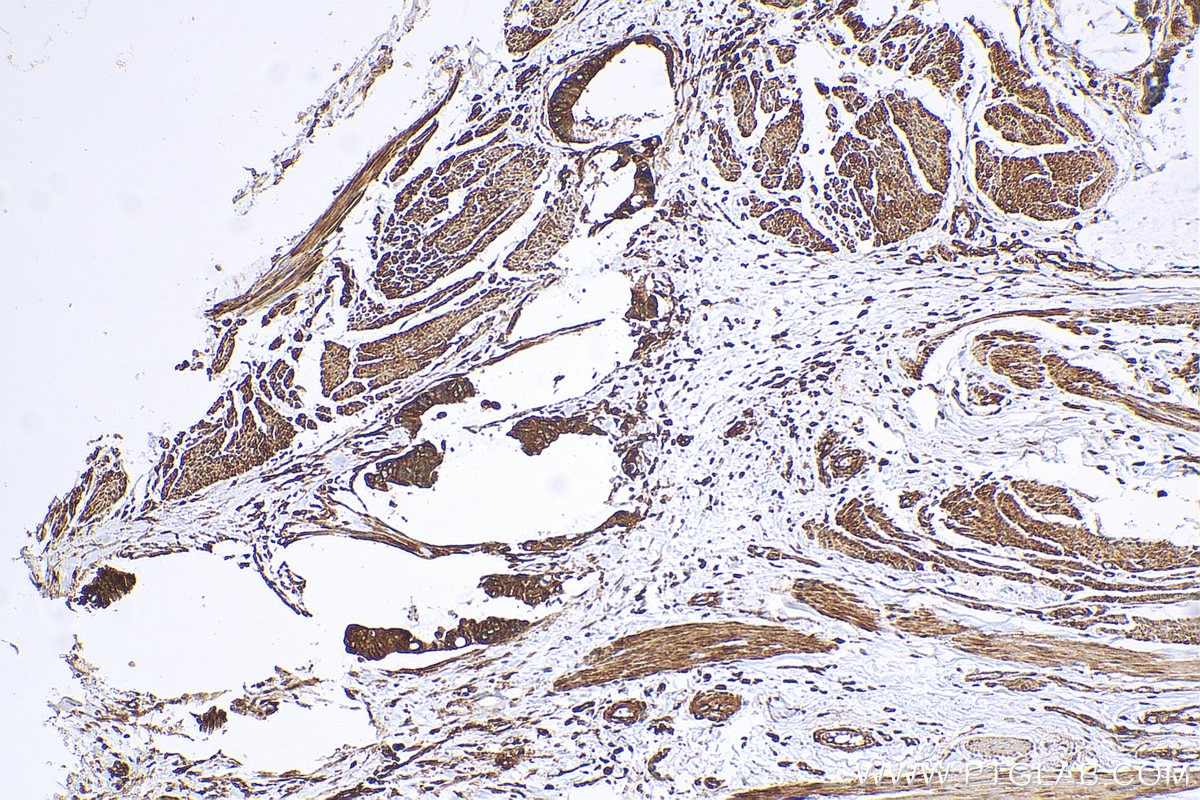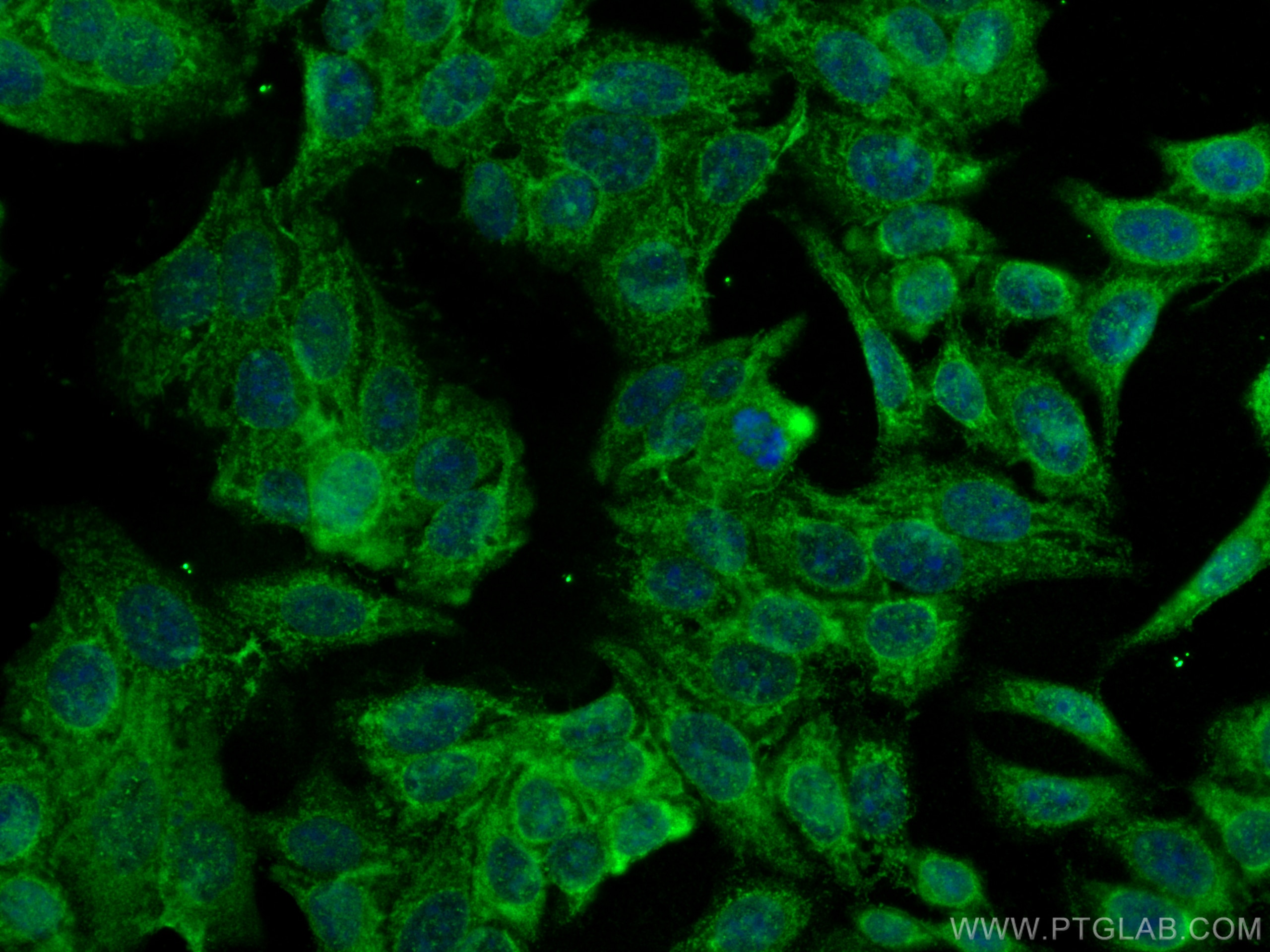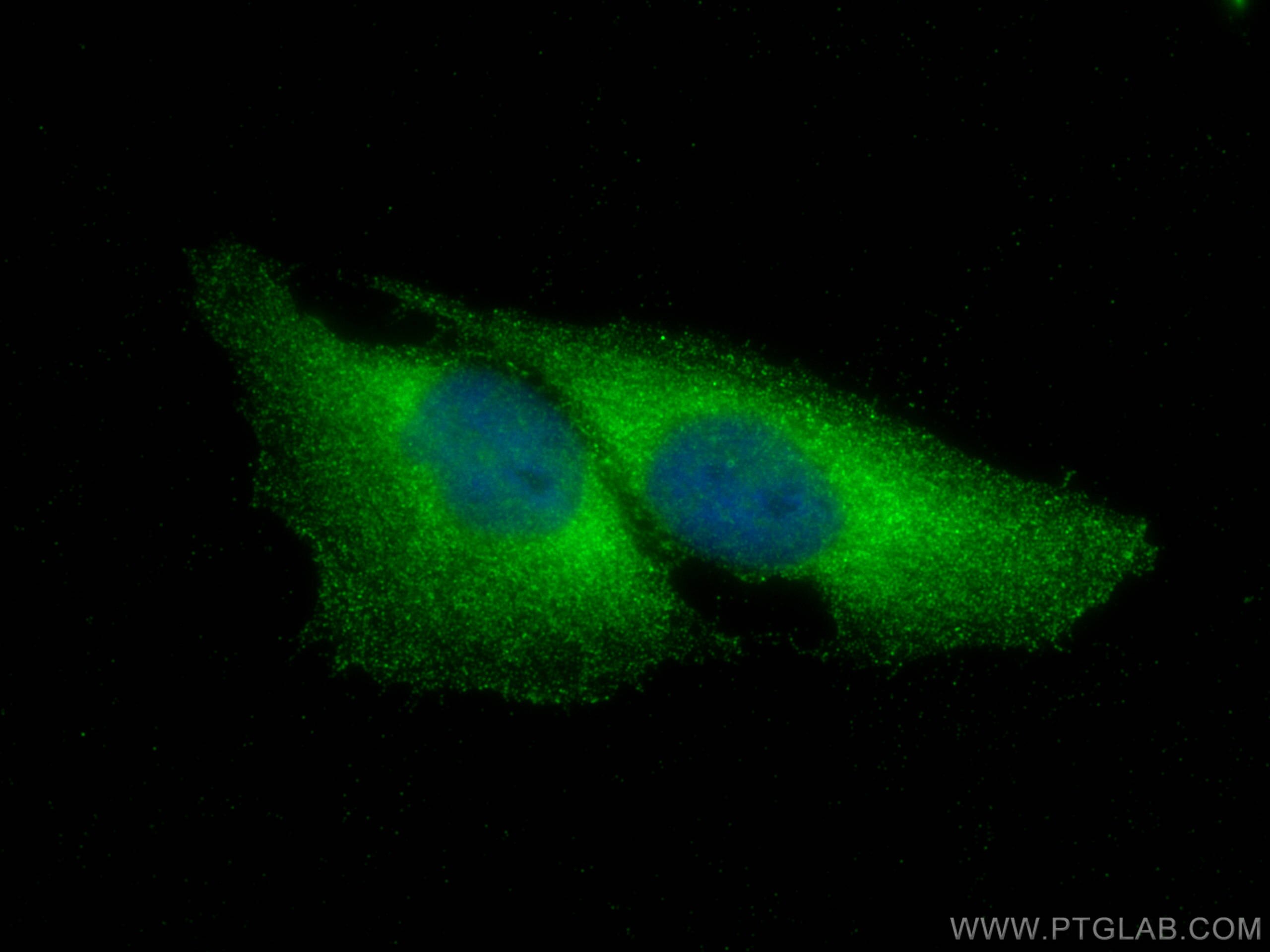- Phare
- Validé par KD/KO
Anticorps Polyclonal de lapin anti-Securin
Securin Polyclonal Antibody for WB, IF, IHC, ELISA
Hôte / Isotype
Lapin / IgG
Réactivité testée
Humain et plus (1)
Applications
WB, IHC, IF/ICC, IP, ELISA
Conjugaison
Non conjugué
N° de cat : 18040-1-AP
Synonymes
Galerie de données de validation
Applications testées
| Résultats positifs en WB | cellules Daudi, cellules HepG2, cellules MDA-MB-231 |
| Résultats positifs en IHC | tissu de carcinome urothélial humain, il est suggéré de démasquer l'antigène avec un tampon de TE buffer pH 9.0; (*) À défaut, 'le démasquage de l'antigène peut être 'effectué avec un tampon citrate pH 6,0. |
| Résultats positifs en IF/ICC | cellules U2OS, cellules HepG2 |
Dilution recommandée
| Application | Dilution |
|---|---|
| Western Blot (WB) | WB : 1:1000-1:6000 |
| Immunohistochimie (IHC) | IHC : 1:50-1:500 |
| Immunofluorescence (IF)/ICC | IF/ICC : 1:200-1:800 |
| It is recommended that this reagent should be titrated in each testing system to obtain optimal results. | |
| Sample-dependent, check data in validation data gallery | |
Applications publiées
| KD/KO | See 2 publications below |
| WB | See 6 publications below |
| IHC | See 2 publications below |
| IF | See 4 publications below |
| IP | See 1 publications below |
Informations sur le produit
18040-1-AP cible Securin dans les applications de WB, IHC, IF/ICC, IP, ELISA et montre une réactivité avec des échantillons Humain
| Réactivité | Humain |
| Réactivité citée | Humain, souris |
| Hôte / Isotype | Lapin / IgG |
| Clonalité | Polyclonal |
| Type | Anticorps |
| Immunogène | Securin Protéine recombinante Ag12670 |
| Nom complet | pituitary tumor-transforming 1 |
| Masse moléculaire calculée | 202 aa, 22 kDa |
| Poids moléculaire observé | 28 kDa |
| Numéro d’acquisition GenBank | BC101834 |
| Symbole du gène | Securin |
| Identification du gène (NCBI) | 9232 |
| Conjugaison | Non conjugué |
| Forme | Liquide |
| Méthode de purification | Purification par affinité contre l'antigène |
| Tampon de stockage | PBS avec azoture de sodium à 0,02 % et glycérol à 50 % pH 7,3 |
| Conditions de stockage | Stocker à -20°C. Stable pendant un an après l'expédition. L'aliquotage n'est pas nécessaire pour le stockage à -20oC Les 20ul contiennent 0,1% de BSA. |
Informations générales
Securin, also known as the pituitary tumor transforming gene (PTTG1), was first isolated from rat pituitary tumor cells. Securin is a multi-functional protein that regulates sister chromatin segregation in mitosis, DNA repair, gene transcription, metabolism, and organ development. Securin is normally expressed in tissues with high proliferative activity, including the spleen, thymus gland, and testis, whereas it is rarely expressed in differentiated mature tissues (PMID: 22563433, PMID: 36123907). The calculated molecular weight of Securin is 22 kDa. With post-translational modification, the molecular weight of Securin will be migrated to 28 kDa.
Protocole
| Product Specific Protocols | |
|---|---|
| WB protocol for Securin antibody 18040-1-AP | Download protocol |
| IHC protocol for Securin antibody 18040-1-AP | Download protocol |
| IF protocol for Securin antibody 18040-1-AP | Download protocol |
| Standard Protocols | |
|---|---|
| Click here to view our Standard Protocols |
Publications
| Species | Application | Title |
|---|---|---|
Cell Mol Life Sci Microglial activation in an amyotrophic lateral sclerosis-like model caused by Ranbp2 loss and nucleocytoplasmic transport impairment in retinal ganglion neurons. | ||
Sci Rep APC/C(CDC20) and APC/C play pivotal roles in the process of embryonic development in Artemia sinica. | ||
Cell Cycle Chronic restraint stress disturbs meiotic resumption through APC/C-mediated cyclin B1 excessive degradation in mouse oocytes. | ||
Cryobiology Melatonin promotes in vitro maturation of vitrified-warmed mouse GV oocytes potentially by modulating MAD2 protein expression of SAC component through MTRs. | ||
Open Med (Wars) The Pseudogene PTTG3P Promotes Cell Migration and Invasion in Esophageal Squamous Cell Carcinoma.
| ||
Oncogene Phosphorylated PTTG1 switches its subcellular distribution and promotes β-catenin stabilization and subsequent transcription activity
|





